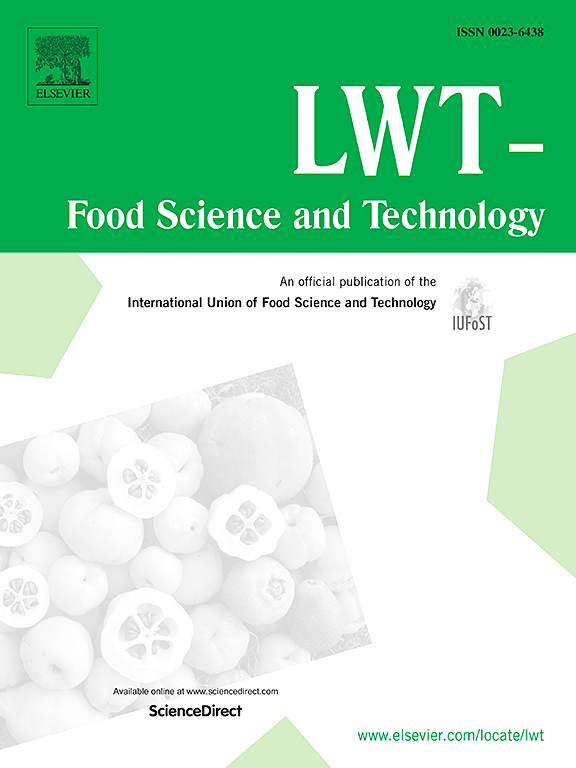Abiotic factors modulating metabolic pathways of lactic acid in solid-state fermentation of cereal vinegar
IF 6
1区 农林科学
Q1 FOOD SCIENCE & TECHNOLOGY
引用次数: 0
Abstract
The composition and metabolism of lactic acid bacteria (LAB) is crucial for vinegars fermentation, which are the predominant microorganisms. To reveal the contribution of LAB to Shanxi aged vinegar (SAV) fermentation the metabolic activities of three types of lactic acid pathway, homofermentative, heterofermentative, and facultatively heterofermentative, were simultaneously detected and compared. In particular, the interference from the unviable LAB cells was removed by using PMA-16S rDNA sequencing. The viable to unviable LAB ratio was found to be 1:1.4 during the solid-state fermentation (SSF) of SAV. To investigate LAB and environment interactions, a PMA-qPCR method was developed for quantifying viable LAB and analyzing lactic acid metabolism. During the entire SSF of SAV the main metabolism of lactic acid shifted from facultatively heterofermentative in the early stage to heterofermentative in the mid-stage, then back to facultatively heterofermentative in the late stage. Abiotic factors temperature, ethanol and acetic acid contents had a significant effect on modulating the shift of lactic acid metabolic pathways in SSF of SAV. These findings highlight the complexity of microbial-environment interactions in SSF and underscore the importance of precise environmental control to optimize fermentation processes and enhance vinegar quality.
求助全文
约1分钟内获得全文
求助全文
来源期刊

LWT - Food Science and Technology
工程技术-食品科技
CiteScore
11.80
自引率
6.70%
发文量
1724
审稿时长
65 days
期刊介绍:
LWT - Food Science and Technology is an international journal that publishes innovative papers in the fields of food chemistry, biochemistry, microbiology, technology and nutrition. The work described should be innovative either in the approach or in the methods used. The significance of the results either for the science community or for the food industry must also be specified. Contributions written in English are welcomed in the form of review articles, short reviews, research papers, and research notes. Papers featuring animal trials and cell cultures are outside the scope of the journal and will not be considered for publication.
 求助内容:
求助内容: 应助结果提醒方式:
应助结果提醒方式:


